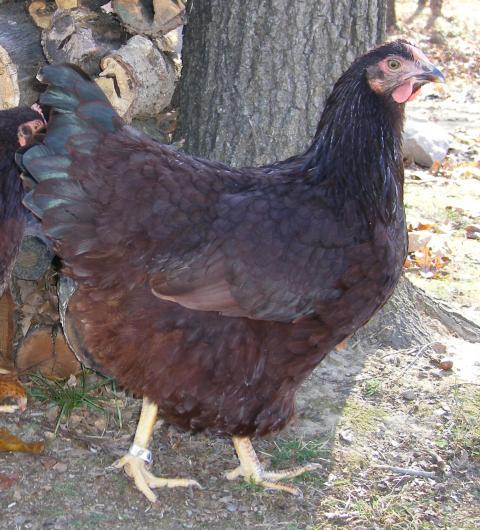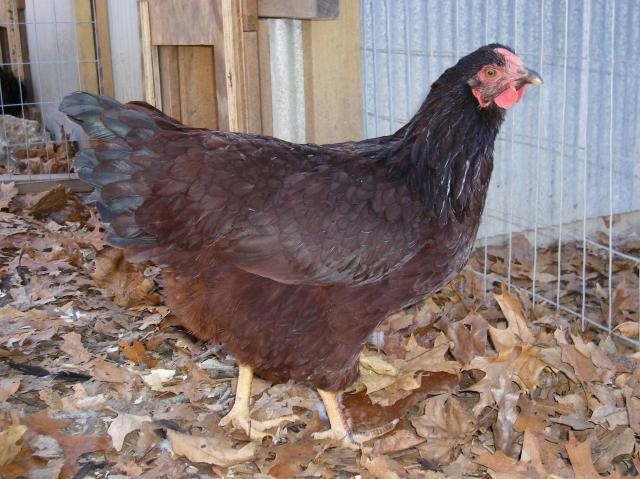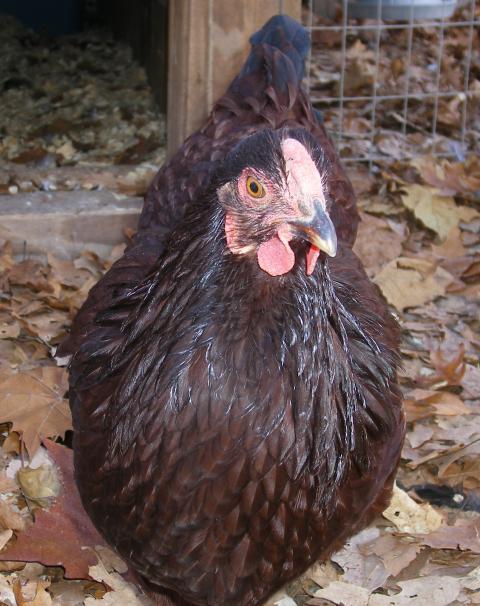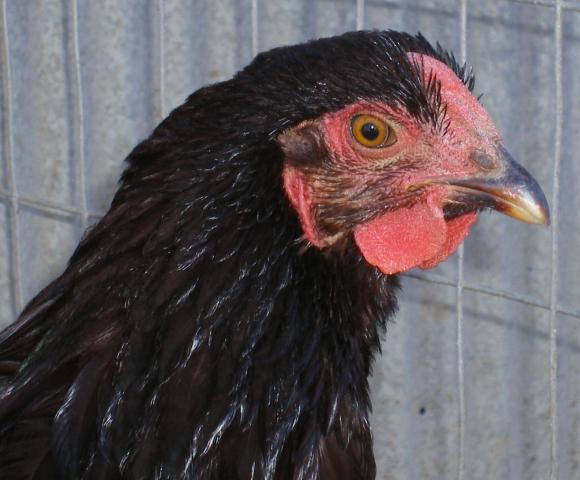Thank you, thats what I have, but with the photos of other types, and me being new, I was a bit worried. Thank you for letting me know.
Navigation
Install the app
How to install the app on iOS
Follow along with the video below to see how to install our site as a web app on your home screen.
Note: This feature may not be available in some browsers.
More options
You are using an out of date browser. It may not display this or other websites correctly.
You should upgrade or use an alternative browser.
You should upgrade or use an alternative browser.
The Heritage Rhode Island Red Site
- Thread starter Robert Blosl
- Start date
This thread is making me miss my big red girls and guys. If I ever get back to the point I can add another breed again instead of having to downsize my flocks like I've had to do now, some RIRs would be at the top of my list to get again.
While other Heritage breeds are gaining in popularity so quickly that one can say they are no longer rare, and should be far from the scopes of the American rare breeds conservatory. Why do you all feel that RIR are listed as not rare, and seem to be falling though the cracks?
Some rosecomb RIRs ...








- Thread starter
- #155
Robert Blosl
Rest in Peace 1947-2013

This is more important than leg color on a bantam.
When people contact me to get large fowl Reds I should know the top strains in the country. There are so few of them. Maybe this winter in December there will be about 100 Single Comb and 50 Rose Comb large fowl alive to produce eggs and help others or there flock owners. There are at least 5 to 10 Thousand production reds alive during the summer and enough to supply people with that kind of fowl. They wont help me help others who want the dark original Heritage Reds.
In leg color I dont even look at it. What is the importance? If they dont have the red tinge down the middle of their legs I kill them all. No, I breed for type, size, feather quality and green tails. In the 22 years of developing these Red bantams I have not even spent any time worrying about leg color I want the color that I had on my large fowl and now I am getting males with black spurs like I had on my large fowl ten years ago. Next thing I am going to try to breed for is the dark black quill color that I had on my large fowl. When you put your hands in the under color of a large fowl and see that dark rich chocolate color like a the color of a can of Prince Albert tobacco and my fingers burn from the hot under color I will be very happy. You take a Red and pull a males saddle feather next to his oil gland and hold it up to the light and look at the quill color. Is it rustic, red, orange or black? Most strains do not have black blood quill color any more. How do you get it.? Put ticking in your females neck feathers and no black in the male neck feathers. Then make sure your tails are beetle green on the outside and the inside of their tail feathers. Then pour the black to the wing feathers. If you have lacing in your females necks you cannot direct the black to the right places. Thats enough on color for today. But that is my goal for the next ten years on these bantams for color . On my large fowl when I had them I saw the good type and color and had good egg production to boot.
Last edited:
I went out today and took some photos of things that have been described but no photos were attached. I hoped this would help others to see what their birds should look like.
I also noticed in a post that someone said "there are allot out there" When Im told by someone that knows the breed there are 200 single combs and 50 rose combs, thats not allot. One good tornado or hurricane to the largest breeder and you loose your breed. With out going into allot of detail, I can tell you that I have been present at an extinction. I had an old horse that I was to study before and after death. I knew going into it that when he died, that species would be extinct. That did not prepare me for the moment he died. Death is final yes, but to know that there is nothing you can do to stop it, and to know that once that animal takes its last breath the world will never see them again. They are gone forever no matter what you want to do. No matter how much energy you have to spend they will never be seen on this planet again. That was years ago, and it was yesterday. I know people can say, "its just a chicken and we have lots of chickens" Yes, and we have lots of horses, but one horse found a cure to AIDS in the 90s. There were only 80 Choctaw horses left on a mountain in OK that a logging company wanted. To make a long story short to save the horses lives after they were purposely exposed to EIA, the horses were donated to the UV of OK to save their lives. The horses and thier foals did not die as planned. They also produced an antibody used to create a vaccine for AIDS. this vaccine is only used in China however has been proven to work. It was just a horse, and we have lots of horses. It took that ONE strain of horse to change the world.
If we loose our strains of old breeds, we loose more then just a chicken, or just a horse. We loose big time as a human race. Those 50 birds are worth saving, and to say there are allot of them is giving faults hope to a situation that needs our attention.
I will get off my soap box now and post the photos..
here are the black pen feathers.

This is the none hollow rose comb. It is important not to mix the single combs to keep the true rose comb. I learned that yesterday.. thanks Bob..

This is the red starting to appear on the young birds feet. I have heard people say that the color of the feet are not important. I however believe they are, and I will keep to the old standards that state, yellow shanks with red over them. No offence to those who don't think it matters. I personally do.

Uploaded with ImageShack.us
I hope someone will post a photo of the hollow rose comb so people can see the differences and understand what is being shown here.
I also noticed in a post that someone said "there are allot out there" When Im told by someone that knows the breed there are 200 single combs and 50 rose combs, thats not allot. One good tornado or hurricane to the largest breeder and you loose your breed. With out going into allot of detail, I can tell you that I have been present at an extinction. I had an old horse that I was to study before and after death. I knew going into it that when he died, that species would be extinct. That did not prepare me for the moment he died. Death is final yes, but to know that there is nothing you can do to stop it, and to know that once that animal takes its last breath the world will never see them again. They are gone forever no matter what you want to do. No matter how much energy you have to spend they will never be seen on this planet again. That was years ago, and it was yesterday. I know people can say, "its just a chicken and we have lots of chickens" Yes, and we have lots of horses, but one horse found a cure to AIDS in the 90s. There were only 80 Choctaw horses left on a mountain in OK that a logging company wanted. To make a long story short to save the horses lives after they were purposely exposed to EIA, the horses were donated to the UV of OK to save their lives. The horses and thier foals did not die as planned. They also produced an antibody used to create a vaccine for AIDS. this vaccine is only used in China however has been proven to work. It was just a horse, and we have lots of horses. It took that ONE strain of horse to change the world.
If we loose our strains of old breeds, we loose more then just a chicken, or just a horse. We loose big time as a human race. Those 50 birds are worth saving, and to say there are allot of them is giving faults hope to a situation that needs our attention.
I will get off my soap box now and post the photos..
here are the black pen feathers.

This is the none hollow rose comb. It is important not to mix the single combs to keep the true rose comb. I learned that yesterday.. thanks Bob..

This is the red starting to appear on the young birds feet. I have heard people say that the color of the feet are not important. I however believe they are, and I will keep to the old standards that state, yellow shanks with red over them. No offence to those who don't think it matters. I personally do.

Uploaded with ImageShack.us
I hope someone will post a photo of the hollow rose comb so people can see the differences and understand what is being shown here.
- Thread starter
- #157
Robert Blosl
Rest in Peace 1947-2013

I wish I had time to take some pictures today as today I shiped out two boxes of birds but I noticed on the one box of reds that the legs where much like this color of this female that I have above. She was posted here on page one or two of this thread. She has normal leg color when you have super dark colored Reds. Notice her beak its also almost black or horned colored. The baromator to color in Rhode Reds the old fashion kind is the beak color, leg color and the quill color. You can see this trait on the day old chicks, look at their beaks and you can see their beaks are extreamly dark with horn color . Also, the darker the large fowl the darker the down color in your chicks. Look at a lot of the pictures of baby chicks that say they are Rhode Island Reds they are a dark buff in hue. These are the golden eggers or production reds they have lost all thier horn color pigment. They old fashion ones are dark as can be and that is what you want to start with with your birds if you can. If you lost this color it can be breed back but thats another story for another day. A secret and I only saw this one time if you ever get a chick with a mouse gray down color. This is a lost gene from the 1930s. It goes back to the Old Rose Comb line that Ernie Jones had and was crosed onto the bantams by Mr. Perrion Johnson in the 1930s when he was develping the Red Bantam. They said Ernie Jones Rose Comb Reds had a hue about a hour befor the sun went down that looked almost like purple in color. Well enough on color for today. Excellent thread coming along and thanks for the pictures and the story about the horses. Any more folks out their that you know of that has Rose Comb Large Fowl Reds?
bob
I have some RC LF reds that I got from Gary Underwood this Spring. These are amazing birds!!! I'm guessing you two are friends, as you have an article he wrote on your webpage.
Quote:
Quote:
- Thread starter
- #160
Robert Blosl
Rest in Peace 1947-2013
Yes Gary Underwood is one of my mentors. I learned so much from him on color. His father George Underwood sent me my first Reds as a junior in the 1960s. He was also intalled in the Rhode Island Red Club Hall of Fame along with his father.
Love to see pictures of your Reds. bob
Love to see pictures of your Reds. bob
New posts New threads Active threads
-
Latest threads
-
-
-
-
Is it easier to join two coveys that already live side by side?
- Started by gummylick
- Replies: 0
-
Is there is a real difference between Aspen and Pine bedding?
- Started by bobsmith2002
- Replies: 2
-
-
Threads with more replies in the last 15 days
-
-
-
-
How intense is your pecking order?
- Started by thecatumbrella
- Replies: 96
-
I know I’m probably going to upset some ppl, but I’m genuinely confused..
- Started by z3lda3
- Replies: 91
-
×



